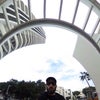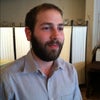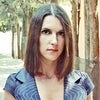Har HaMenuchot (Hebrew: הר המנוחות, "Mount of Rest", Ashkenazi pronunciation, Har HaMenuchos) is the largest cemetery in Jerusalem, Israel. It is located at the western edge of the city adjacent to the neighborhood of Givat Shaul, with commanding views of Mevaseret Zion to the north, Motza to the west, and Har Nof to the south. As the official municipal burial ground, it accommodates free burials for Israeli citizens (although the choice of plot is left to the municipal chevra kadisha, and if a spouse wishes to be buried in the adjacent plot, he or she must pay for the second plot).
When Har HaMenuchot opened in 1951, it greatly expanded Jerusalem's capacity for burials, as the only other large cemetery available until that time was the centuries-old burial ground on Har HaZeitim (the Mount of Olives). Today, burials are conducted in Har HaMenuchot, Har HaZeitim, and the small Sanhedria cemetery near the center of town.
in the background]] Har HaMenuchot is in a continual state of expansion, with new sections opening regularly.
Like other Jewish cemeteries in Jerusalem, the plots on Har HaMenuchos consist of an underground grave topped by a large, cubic stone marker upon which is engraved the name, date and praises of the deceased. In the case of famous rabbis who are buried here, the entire top of the stone marker is inscribed with verses or phrases extolling the deeds of the deceased. The names of the deceased's family members who died in the Holocaust and thus did not have a grave are often engraved on the side of the gravestone.
The graves on Har HaMenuchot are divided into sections operated by various chevra kadishas (the Perushim, the Chassidim, the Sephardim, and the Kehillas Yerushalayim). Near the main entrance lies the Perushim's Chelkas Rabbanim (Hebrew: חלקת רבנים, "Rabbis' Section") which includes many gedolim of the past 60 years from around the world. While most of the graves in this section are laid out in closely-packed rows, two graves stand by themselves in the entryway: those of Rabbi Moshe Feinstein, a major posek of American Jewry, and Rabbi Aharon Rokeach, the fourth Belzer Rebbe, whose gravestone has become a shrine for thousands of visitors annually.
Kohanim are buried in a separate section just outside the main entrance, so that their family members who are not allowed to enter cemeteries to avoid tumah (ritual impurity) may stand by the side of the road and pray at their ancestors' graves.
One grave known as a segula (propitious remedy) for childless women is that of Miriam HaKoveses (Miriam the laundress), who worked for the Zvhiller Rebbe, Rabbi Shlomo Goldman. Once she asked the Rebbe for a blessing for children, but he blessed her that in her merit, others would merit to have children. Twenty-nine years after her death in 1964, one of her neighbors had a dream in which Miriam appeared to her, told her of the Zvhiller Rebbe's promise, and gave her directions to her grave. On her yahrzeit that year, busloads of women came to pray at the grave while a Torah scholar recited prayers for the elevation of her soul. There were 32 known cases of women who prayed at Miriam's grave and gave birth to children that year. Since then, her grave has been renovated and enlarged to accommodate women year-round.



